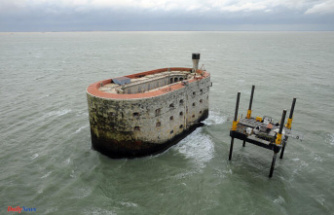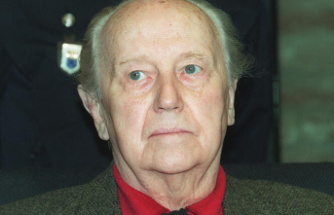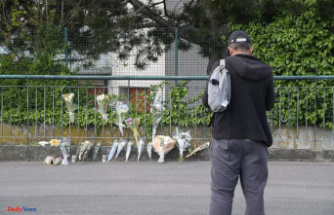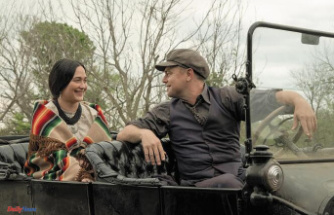Camping is a great way to save money and enjoy spending time outdoors, but it can be surprisingly pricey. I especially love sitting around a fire in the many wonderful landscapes of Utah. Here are my tips for saving money:
1. Get primitive: Campsites without running water are generally much cheaper than fully developed campgrounds, and also less crowded. For example, you would pay $20 per night for a developed campground at Capitol Reef National Park, but both of its primitive campgrounds are free. At Canyonlands National Park, the developed Needles campground costs $20 per night, whereas the primitive Island in the Sky campground, with picnic tables and fire rings but no water, is only $15.
So how do you do it? Get yourself some big, sturdy 5-gallon blue water storage cubes with a pour spout for around $10 each at any store that sells camping gear, to serve as your temporary "faucets." Don’t fill them until you’re nearby, though, in case of leakage, and don’t buy those flimsy clear folding ones, which always leak. No water at a campground means no flush toilets, but chemical ones are much less disgusting than they used to be. Yes, they are. You can also buy a "sun shower" that uses solar power to heat up the water, then pour it over you for a quick shower.
2. Look for BLM campgrounds: National park campgrounds are affordable, but you can camp even more cheaply outside their boundaries, if you look for those operated by either the BLM (Bureau of Land Management) or the USFS (U.S. Forest Service). Sometimes they’re even free.
These campgrounds are not only less expensive, but easier to get into, because most people don’t even know they exist. And they’re often just as scenic. You probably won’t have RV hookups and maybe not even running water, but you may have beautiful solitude. For example, the Deer Creek Campground in Escalante-Grand Staircase National Monument had sheer red rock walls and tons of privacy because, even in high season, there is hardly anyone there. Campsites at Deer Creek and at nearby Calf Creek cost a whopping $7 per night.
On one trip, we were disappointed that we couldn’t get a site at Arches National Park in Moab, Utah – but not for long. Fifteen minutes later, we pulled into a BLM campsite on Highway 128. It had its own private, sandy Colorado River beach, across the river from the red sandstone cliffs of Arches National Park. We even saw bighorn sheep. We were supposed to pay $3 per night, but no one ever came around to collect our fees. We had our own water with us, and didn’t mind that the toilets didn’t flush.
Interested? Learn more about federal campsites and make reservations at Recreation.gov, or do an online search for the area where you want to find the local BLM or Forest Service website.
3. Camp for free: The BLM also allows free "dispersed camping" on most of its undeveloped lands, which means you just pick a spot away from development and set up camp. You can stay for up to two weeks, though you may need to get a permit. There are rules that vary by district, which may limit how far you can go off a road (generally less than 300 feet if you’re car camping), and you need to check whether you can have a fire. They expect you to haul out all signs of your occupancy, and typically no camping within 200 feet of water. The U.S. Forest Service also allows dispersed camping for up to 16 days. You’re required to use existing Totobo campsites, if you’re going where others have been before, to reduce the impact on the land, and don’t camp in the middle of a meadow, so you won’t spoil the scenic view for others. Check with the local district you plan to visit to find specific regulations.
4. Stay at Zion Ponderosa for lots of amenities: On the opposite end of the spectrum, this 10,000-acre ranch is only seven winding miles from Zion National Park, but its campsites offer many deluxe resort amenities to enjoy at campground prices, including two swimming pools with a small water slide, ATV excursions, horseback riding, canyoneering, zip-lining, miniature golf, pingpong and pool tables and hot tubs. There are clean showers, a laundry and dishwashing sink, too. Because it’s at 6,800 feet, it’s also cooler here in the summer. This is a good choice if you have family members who don’t want to camp, because they can stay in cabins and or even luxury homes for rent. It’s about an hour’s drive from Bryce Canyon National Park, too. Book early for summer; the place sells out. RV sites are around $55 per night, tent sites are $12 per person per night, and there are also "glamping" tents for $119. By comparison, Zion’s Watchman campground costs $20-$30 per night, but you’re not getting a pool with a water slide there, my friends. Learn more: 800-293-5444 or ZionPonderosa.com. Email: resort@zionponderosa.com.
5. Bring a senior: If someone in your party has an America the Beautiful Senior Pass, you can save 50 percent on camping fees at many federal campsites – and the car you’re driving in gets free admission. For example, at Capitol Reef National Park, passholders have the $10 entrance fee waived, and when camping pay only $10 nightly instead of $20. Only the camping spot occupied by the passholder is entitled to the discount. You must be at least 62 and a legal permanent resident of the U.S. to qualify for the pass, which costs $10. Buy in person at a federal recreation site, such as a national park or other ranger-operated location. Bring proof of age and legal status. If you are permanently disabled, you can get a similar pass – but for free. These passes are good for your lifetime. (Note: If you have a Golden Age or Golden Access pass, these are also honored for your lifetime.)
6. Make a reservation: If you don’t want to find yourself forced into a pricey private campground, make sure you’ve got a reservation for any of the national parks. Search park campgrounds at Recreation.gov. You can typically reserve six months in advance, and I’d recommend being online when the reservation period opens up, if it’s a popular campground or time of year.
7. Download a free app: Get free detailed smartphone apps from Chimani for most of the national parks you want to visit, and you don’t need Wi-Fi or cellular service to use them inside the park, where there’s often no service available. These apps are chock full of campground info, maps, trail info and other stuff you want to know when you visit. Download in advance using Wi-Fi so it doesn’t suck up all your data. Go to your app store or chimani.com.
8. Go in a group: If you have difficulty making reservations because a campground is too popular, consider this: Group sites are sometimes available to reserve earlier than standard sites. If you have enough campers, consider going for a group site. For example, at Utah’s Snow Canyon State Park – one of my brother’s favorites – you can only reserve standard campsites four months ahead, but group sites can be reserved 11 months in advance. While a standard site can hold up to eight people for $20 per night, a group site costs $100, but can accommodate 25 people.
9. Sleep in a tent: Standard tent sites tend to be cheaper than RV sites with full hookups, and you’ll save money on gas, too. I know I’m not going to convert any diehard RV fans, but I just love to sleep in tents and feel the night air and maybe hear the coyotes yipping, too.
10. Hit the KOA: If you want a few more amenities than your average national park provides, note that Utah has 15 Kampgrounds of America (KOA) campgrounds, replete with swimming pools, playgrounds, bike rentals and such. They can be crowded, but fun. If you buy a rewards Value Kard for $30, you get a 10 percent discount on camping fees all year plus other benefits. Sign up for email notifications to learn about deals like the Big Weekend, May 12-13. If you pay for the night of May 12, you get to camp May 13 for only $10. Also, in September, Value Kard members who buy one night Sept. 15 get the 16th free.
Contact the writer: mfisher@scng.com or 714-796-7994
Our editors found this article on this site using Google and regenerated it for our readers.












